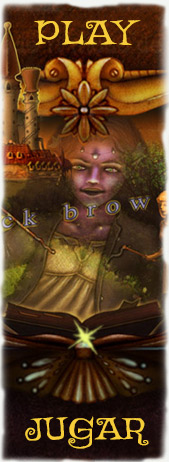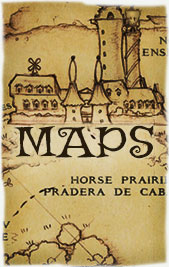Review: How To Write A Solo Adventure, Elven Lords

In this post, I want to talk about adventure and story writing as a reaction piece to a recent publication by the makers of Tunnels and Trolls: T&T Solo Design Guidelines: How to Write A Solo Adventure. From Flying Buffalo, available at drivethrurpg.com.
This PDF is a collection of Tunnels and Trolls solo adventure guidelines and advice, which spans many years and a number of authors. The document was recovered and edited recently by Steve Crompton after the death of Tunnels and Trolls founder Rick Loomis.
The primary author is the legendary Michael A. Stackpole. Stackpole is a well-known and regarded fantasy fiction author, particularly in the genre of Star Wars. His Wikipedia page doesn’t have a T&T publication list, unfortunately.
In any case, Stackpole was the author of City of Terrors, my favorite T&T adventure, and also the Elven Lords solo adventure. I purchased Elven Lords and started playing it today.
I wanted to write down my thoughts as soon as possible about the Solo Design Guidelines, and then reflect on the design of Stackpole’s own Elven Lords after multiple play-throughs.
Stackpole is arguably one of the best T&T solo writers, along with Ken St. Andre. He also has a lot of professional fiction writing credits. So let’s have a look at his early writing advice for adventures.
Time In Adventure Writing
In my last dev blog post, I wondered whether I could use time better in my adventure writing. T&T modules use a large amount of “telling” and summary to relate events. I tend to use a large amount of second-by-second dialogue.
I feel like my adventures could be better if I used more summary to enable more expansive adventures and more branching options, without having to create all of the needed art and moment-by-moment minutiae that a tight time focus would demand.
In other words, I could write more like a T&T module. Stackpole goes into time considerations on page 18 of the Guidelines. He notes that time movement is more important in a novel-type adventure. Geographical movement is more important in a dungeon delve.
Stackpole notes the Overkill adventure was the first T&T module to use “temporal progression.” I’ll need to play that to understand what he means. Stackpole also warns of a few major traps to avoid at all costs in temporal progression of adventures.
Temporal fugues: the text incorrectly acts like a character has already done something. This is a pretty obvious problem, and it’s shocking such a “bug” was actually published in Beyond the Wall of Tears.
Impossible Choices: the text incorrectly assumes a character has an item, or can do something that should not be possible (kill someone who is already dead.)
Looping: avoid the ability to loop infinitely.
OK. These things seem very obvious and simple. In fact, a lot of points in the Guidelines target very bad writers who were sending in manuscripts back in the day.
So I went to Google. I found the concept of Scene and Summary. When do you write a full-fledged scene? When do you just sum up events. You can open any fantasy novel and see how to do this. It’s sort of an art form.
In fact, Scene and Structure is a book that I’ve studied thoroughly. I’d recommend it. Am I doing it well in my RPG project? Not really. I did it well in my novels.
The general rule, which seems obvious once stated, is to slow down time at times of the highest tension. When the blood, tears, or kisses are flying, you want to zoom in on every warm, wet droplet. When people are riding a train to Timbuktu and the next dramatic scene, you can sum up that train ride.
After playing Elven Lords, I see how T&T sums up time to its bare essences, the barest bones of a story. In fact, one recommendation was to not have any paragraphs that do not offer a meaningful choice.
One very notable thing missing from the Guidelines is the actual heart and soul of fiction, which is characters.
Characters: There Aren’t Any!
I see virtually nothing about characters in How To Write A Solo Adventure. In fact, the second sentence of the advertising splash for this PDF says “how to develop NPCs” (last page of the published PDF), but there is nothing on this topic.
If you search “NPC” in the document, there is only one other use of the word NPC, which just says that Catacombs of the Bear Cult has a bunch of NPC’s. OK. Maybe that’s a good adventure then, but that doesn’t help us much. All “character” references refer to the player character.
So that’s a glaring mis-statement on the part of the advert. Actually, the best T&T modules do have the most memorable characters, but they are not discussed in this PDF.
That was a little disappointing, because I actually grabbed onto that advert sentence as a selling point for this PDF. This PDF is definitely worth the sale price of $4, and Crompton isn’t exactly going to rake in the dinero for his effort on this one. He should be commended actually.
I’m currently playing Vampire The Masquerade: Coteries of New York, and the characters there are a bit lacking as well. The takeaway is that characters are one of my strong points. I need to have better facial expressions for my NPC’s, reactions, etc..
Flowcharting!
Easily the most valuable part of the T&T Solo Design Guidelines is the concept of flowcharting an adventure design. A big reason I am struggling with adventures is because they are much more complicated than novels.
Tracking all the branching paths is a big headache, so there tends to be less branching paths. It turns out that no alternate paths is the path of least resistance!
Flowcharting is a great idea. You will have to read and look at the PDF text for a full treatment. Stackpole’s examples include numbering the flowchart nodes to match your numerical system of categorizing locations.
There are also dead ends (literally you are dead), reward locations, exits to the dungeon, etc. all flowcharted. Stackpole notes that a repeating diamond chart (the way my adventures are going) tend to be boring.
On the other hand, Stackpole suggests he wants at least 30 playthroughs possible for the player, and that seems a bit insane. He advocated for massive adventures, twice the size of City of Terrors.
To sum up, here are a few more takeaways from this easily digestible historical T&T development document, which I would recommend as a purchase for any adventure writers, historians, or fans of Tunnels and Trolls.
1. Try to give players heroic or moral choices, not road map choices.
2. When you need to make map choices, try to frame the choice within motivation, reason, or evocative language, something other than just a direction (“go north”).
3. According to polls on old T&T modules, replayability was highly correlated with enjoyment(?). The best adventures have lots of choices and ways to complete the module. This might be different in the modern day, however.
4. No explicit violence or sexual conduct due to age issues. Wait what? There are a few scenarios, including in Stackpole’s City of Terrors, where you can sleep with someone in T&T modules. I’m not sure what he means. Maybe explicit sex?
4a. Later in addendum #4, Stackpole mentions that Corgi publishing editors neatly skirted the COT and DED sex scenes. What does that mean? Which booklet edition did I originally play back in the day?
5. Try not to have any instant death choices without a saving roll.
6. Keep in mind your themes. (In other words, enrich the setting, but keep it consistent without anachronisms and without copyright infringement.)
7. Conflict is the fire in the the heart of fiction, and the heart is a character. Ok I might have mostly written that one myself. But even in T&T adventures with little character development or characters to speak of, there are plenty of ways that Stackpole creates conflict with monsters, factions, and the environments, etc..
To sum up, I wanted to get my thoughts down after studying the T&T Solo Design Guidelines: How to Write A Solo Adventure. I intend to play through Elven Lords a fair bit more (at least long enough to actually meet some elven lords!), then I may return to edit this post with some reactions and further reflection.

